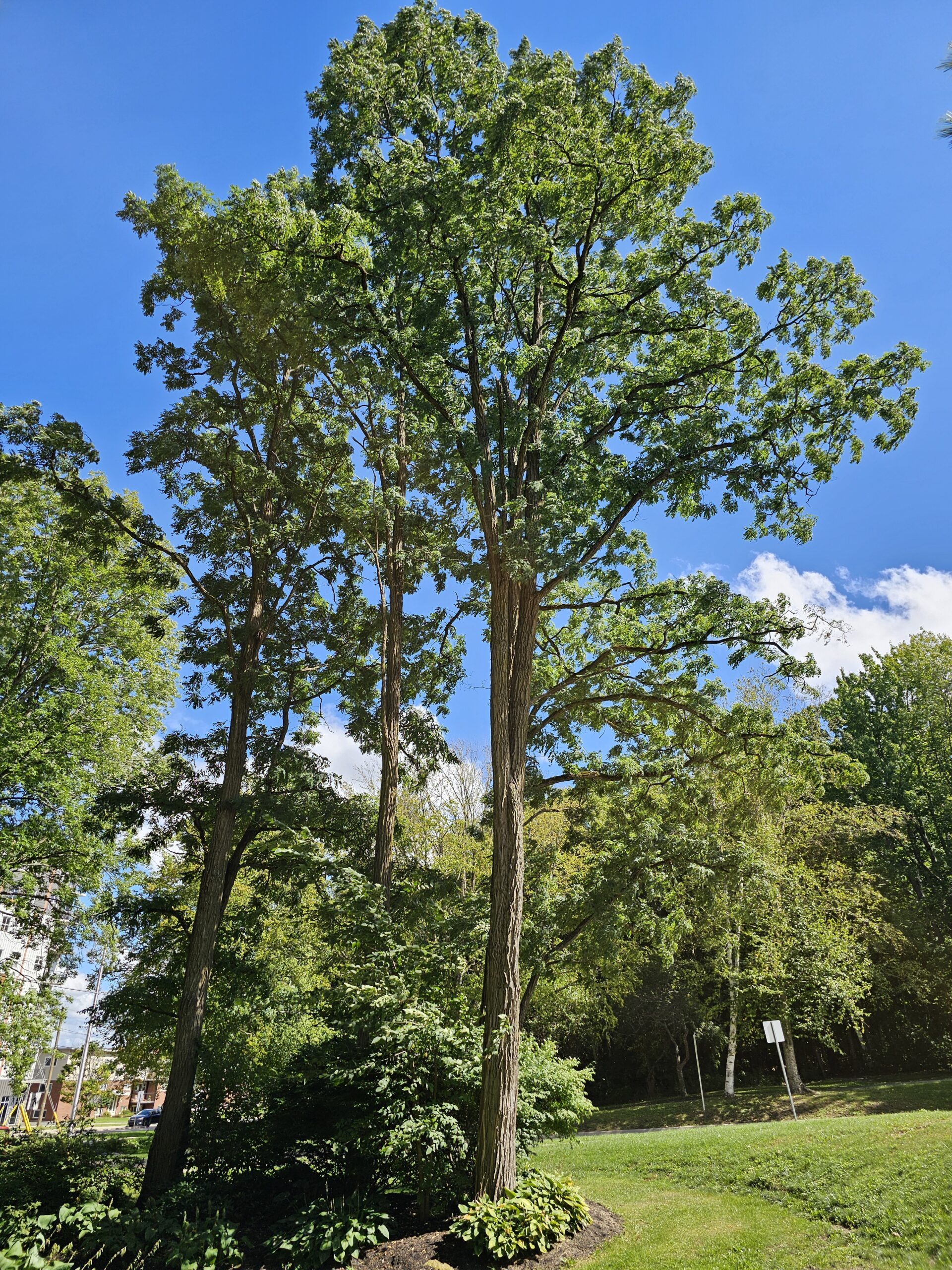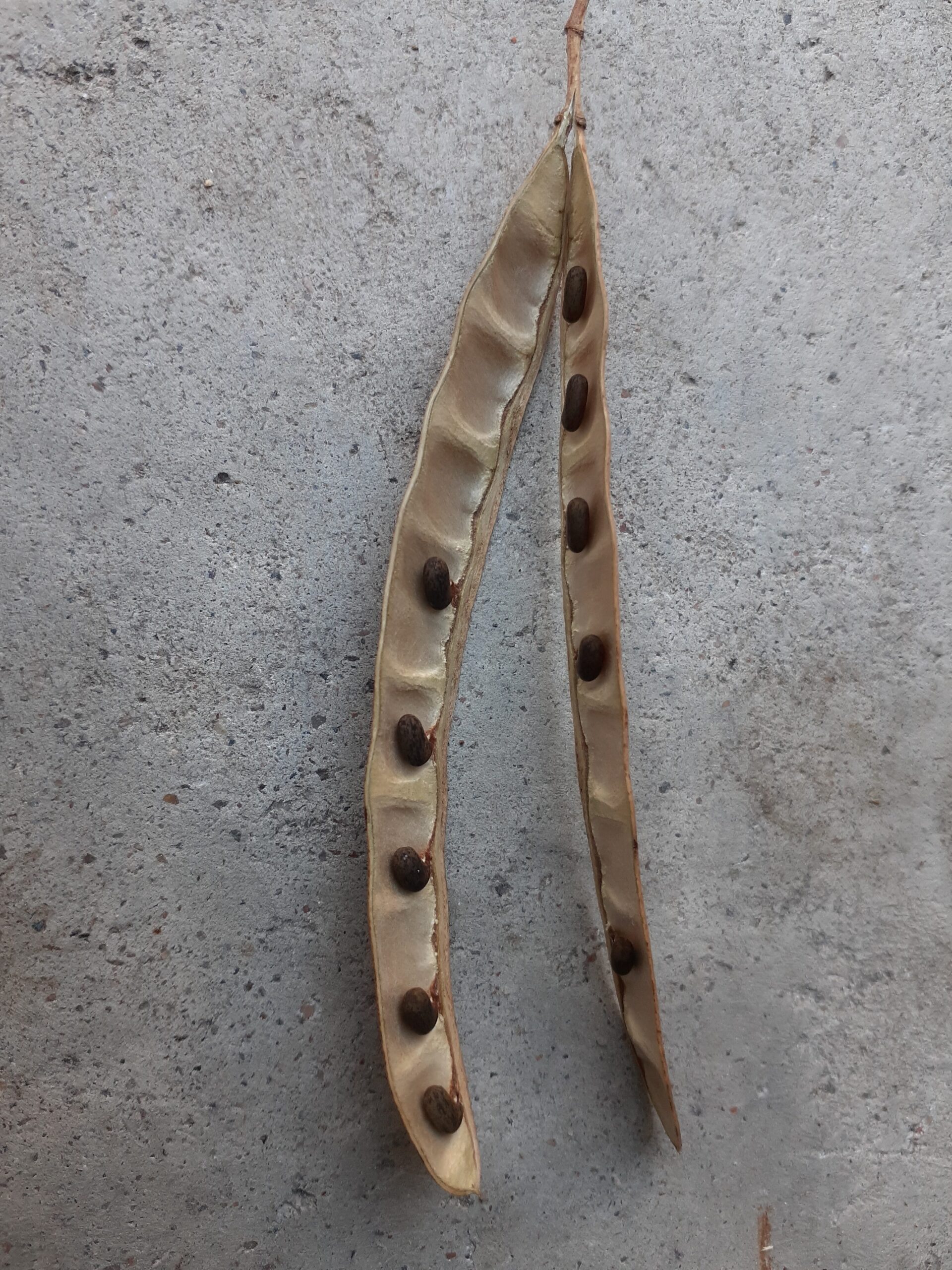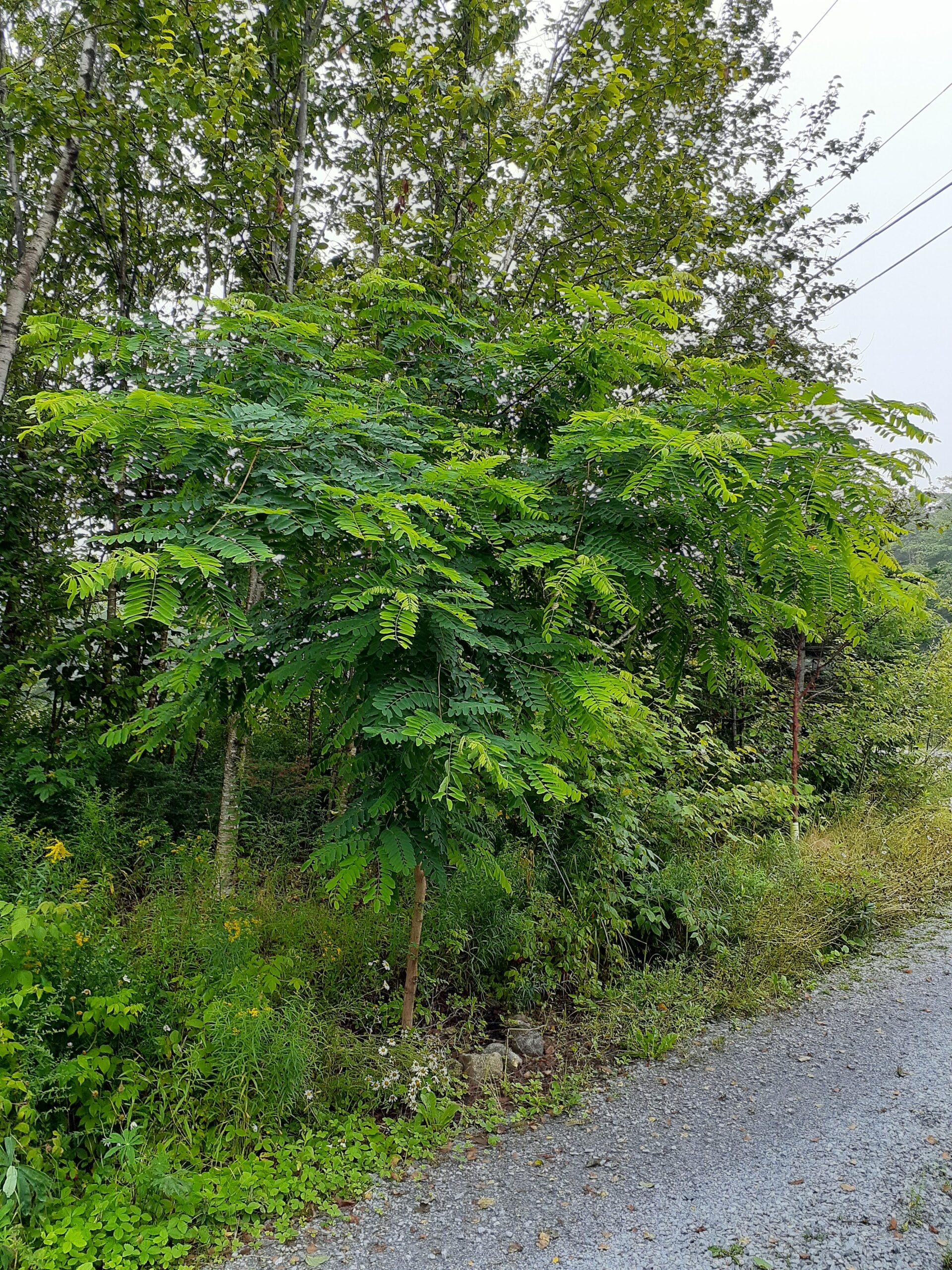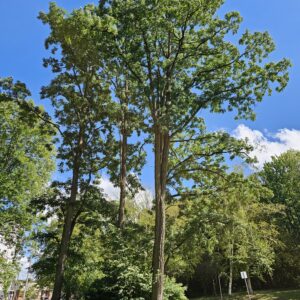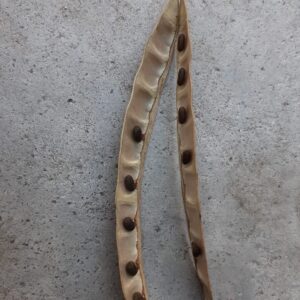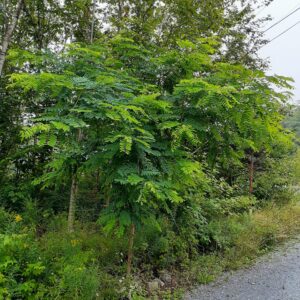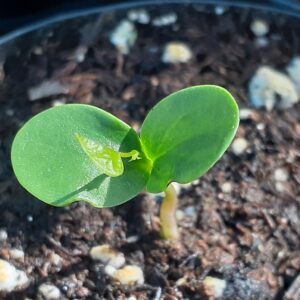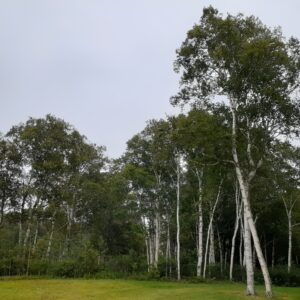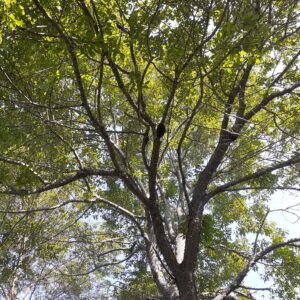Black Locust
Robinia Pseudoacacia
A fast-growing tree native to eastern USA. Occasionally planted in New Brunswick. Fragrant, white, drooping flowers emerge in early summer that are ‘perfect’, containing both male and female parts. Tends to produce root suckers which can form thickets and provide privacy and shelter. Root nodules fix atmospheric nitrogen in the soil making it a great pioneer tree on disturbed sites with poor soil providing nutrients for other plants in the process. Prune in fall because the tree will ‘bleed’ sap if pruned in spring. Twigs and bark are poisonous to domestic animals and are covered in thorns. Considered invasive due to abundant seed production and root suckering.
Additional information
| Foliage | Deciduous |
|---|---|
| Locale | Native to North America |
| Height | Medium (30-60ft) |
| Width | Narrow |
| Form | Irregular, Oval |
| Growth Rate | Fast |
| Longevity | Moderate (50 to 100 years) |
| Hardiness Zones * | 4, 5 |
| Sun Exposure | Full Sun (over 6 hrs), Partial Sun (4 to 6 hrs) |
| Soil Preferences * | Moist, Slightly Acidic, Well Draining |
| Soil Tolerances | Dry, Slightly Alkaline |
| Other Tolerances | Occasional Drought, Road Salt |
| Ornamental Interest | Flowers (attractive), Leaves (shape) |
| Wildlife Value | Bees (flowers), Birds (fruits/seeds), Butterfly Larvae (leaves), Hummingbirds (flowers), Insect Pollinators (flowers), Small Mammals (fruits/seeds) |
| Human Value | Carpentry (wood), Fuel (wood) |
| Seed Collection | Personally in NB |
| Planting Considerations | Casts Light Shade, Intolerant of Full Shade, Prone to Ice Damage, Prone to Wind Damage |



